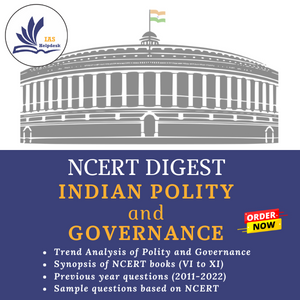Major Economic Committees in India
Description
Major Economic Committees in India
India’s economic landscape has been significantly shaped by various committees over the years, each tasked with addressing specific challenges within the banking sector, fiscal and monetary policy, tax reforms, and poverty alleviation.
These committees, often composed of leading experts and policymakers, have provided critical insights and recommendations that have guided the country’s economic strategy and reforms.
This article provides an overview of some of the major economic committees in India, highlighting their key functions and contributions to the nation's economic development.
Banking Sector
These committees have focused on the structural and operational aspects of the banking industry, aiming to enhance efficiency, stability, and inclusivity.
Narasimham Committee-I (1991):
Establishing Asset Reconstruction Fund (ARF) Tribunal: To deal with the recovery of non-performing assets (NPAs) by setting up an ARF.
Removal of Dual Control of Ministry of Finance and RBI: Recommended to streamline control between the Ministry of Finance and the Reserve Bank of India (RBI).
Reduction in Cash Reserve Ratio (CRR) & Statutory Liquidity Ratio (SLR): Suggested lowering these ratios to free up more resources for the banking sector.
R. H. Khan Committee (1997):
Concept of 'Universal Banking': Proposed a model where commercial banks could diversify into investment banking and insurance.
Narasimham Committee-II (1998):
Merger of Major Public Sector Banks: Suggested consolidation of public sector banks to create stronger entities.
Reform in the Role of RBI: Recommended redefining the functions and roles of RBI.
Reducing Non-Performing Assets (NPAs) to 3% by 2002: Set a target to reduce NPAs in the banking sector.
Raghuram Rajan Committee (2008):
Promote Financial Inclusion and Financial Stability: Aimed at increasing access to financial services and ensuring stability in the financial system.
P. J. Nayak Committee (2014):
Reforming Governance Structure of PSBs: Recommended improving the governance of Public Sector Banks (PSBs) for better performance.
Nachiket Mor Committee (2014):
Financial Services for Small Businesses & Low-Income Households and Concept of Payment Bank: Proposed new ways to provide financial services to underserved segments and suggested the creation of payment banks.
Y. H. Malegam Committee (2013):
To Review the Microfinance Sector in India: Aimed at assessing and providing recommendations for the regulation and operation of microfinance institutions.
Tax Reforms
Addressing the need for a more streamlined and fair tax system, these committees have proposed reforms to both direct and indirect taxation in India.
Raja J. Chelliah Committee (1991):
Reforms in the Indirect Tax Structure in India: Suggested changes to improve the indirect tax system.
Introduction of Value Added Tax (VAT): Recommended implementing VAT to replace existing multiple taxes on goods.
Kelkar Committee (2002):
Task Force on Direct & Indirect Taxes: Provided recommendations on reforms in direct and indirect taxation, including simplification and rationalization.
Fiscal and Monetary Policy
These committees have provided guidance on managing India's fiscal deficit, inflation targeting, and liberalization of financial markets.
S. S. Tarapore Committee (1997):
Liberalisation of Capital Account Transactions: Advocated for the gradual liberalization of capital account controls.
N. K. Singh Committee (2016):
To Review the Fiscal Responsibility & Budget Management (FRBM) Act, 2003: Reviewed and suggested amendments to the FRBM Act to ensure fiscal discipline.
Urjit Patel Committee (2014):
Form Monetary Policy Committee: Recommended the formation of a Monetary Policy Committee (MPC) to decide on interest rates and other monetary policies.
Use of CPI over WPI as a Measure for Inflation Targeting: Suggested shifting the focus from the Wholesale Price Index (WPI) to the Consumer Price Index (CPI) for better inflation targeting.
Poverty
Aimed at understanding and mitigating poverty, these committees have played a vital role in defining poverty lines and suggesting measures for poverty reduction.
Alagh Committee (1979):
To Estimate Poverty Line for Rural and Urban Areas: Worked on defining and estimating the poverty line for both rural and urban areas in India.
Lakdawala Committee (1993):
Estimation of Proportion and Number of Poor: Proposed a methodology to estimate the number and proportion of people living below the poverty line.
Tendulkar Committee (2009):
Urban Poor - Daily Spending < ₹33, Rural Poor - Daily Spending < ₹27: Suggested new poverty lines based on expenditure, setting daily spending thresholds for defining poverty.
Rangarajan Committee (2012):
Urban Poor - Daily Spending < ₹47, Rural Poor - Daily Spending < ₹32: Revised the poverty lines set by the Tendulkar Committee, increasing the spending thresholds for defining poverty.
Conclusion
The recommendations and reforms suggested by these economic committees have played a pivotal role in transforming India’s economic framework. From the restructuring of the banking sector to the overhaul of tax systems, and from fiscal policy management to poverty estimation, the impact of these committees is deeply embedded in the policy shifts and economic strategies adopted by India. As the country continues to evolve, the insights from these committees remain relevant, guiding policymakers in addressing emerging economic challenges and steering India towards sustained growth and development.

